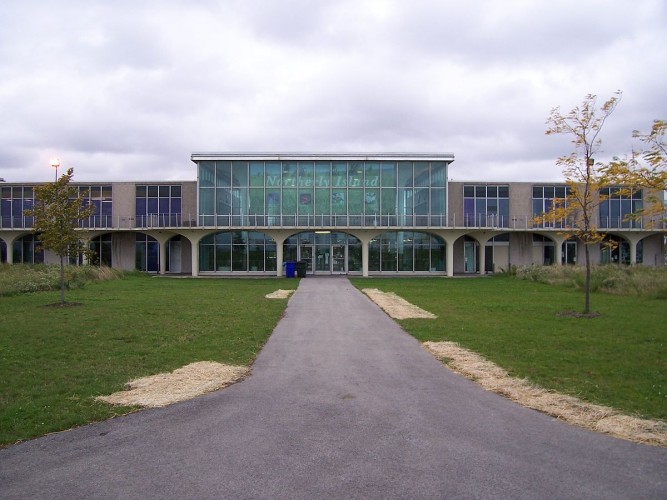Lee Bey didn’t know what to expect when a colleague told him to immediately turn on the news. He feared the worst, a tragedy of some kind. When he did, he saw that several large, X-shaped trenches had been gouged into the runway at Meigs Field ― Chicago’s small, downtown airport.
In the dark, early hours of March 31, 2003, Mayor Richard M. Daley shocked the city, ordering the destruction of the runway via construction crew and bulldozer, without giving a thirty-day notice as required by Federal Aviation Administration regulations. Forcing planes in the air, expecting to land at Meigs to reroute.

Daley held a press conference later that day to defend his order; “The reason we closed the airport now is a fear shared by the park district, emergency management specialists and myself about all those airplanes coming so close to so many people in the downtown area,” Daley said. “I am not willing to wait for a tragedy”
As acting deputy Chief of Staff under Daley, Bey answered calls from people who had also seen what happened on the runway at Meig’s Field and the subsequent press conference. He expected to be balled out by politicians and private jet owners. On the contrary, he received call after call from the public, commending Daley’s decision to have the land converted to public space.
While Bey may not have heard it, many were upset with the destruction of Meigs and especially the way it was done. Some of the opposition decided to take action. Steve Whitney, president of Friends of Meigs Field – a group dedicated the preservation of Chicago’s downtown airport, labeled the destruction as “the only U.S. infrastructure destroyed by terrorism since September 11, 2001.”
Today, Friends of Meigs Field is leading the battle for the return of the small urban airport, going head to head with open space advocates who say the park should remain free and open to the public, wildlife and music enthusiasts, who come to the park to enjoy summer concerts. It’s part of an ongoing debate here in Chicago and throughout the country on how space should be redefined when demand shifts.
This transition may have seemed to occur overnight for the media and public, but turning Meigs Field into public space was a long, hard-fought battle for Mayor Richard M. Daley, and even his mayoral ancestors.
Daley attempted to close the airport in 1995, in the same year Friends of Meigs Field was founded. His attempt was unsuccessful and was met with plenty of opposition, including some from former Republican Illinois Gov. Jim Edgar Tuesday.
Daley had a vision for the peninsula to become public space as it was originally intended to be since its conception in 1909, when Daniel Burnham designed the land to be the northernmost point of a chain of island parks (it was the only one built) – part of his 1909 Plan of Chicago. Northerly Island gained a lot of attention when it hosted Chicago’s second world fair in 1933-34.

Friends of Meigs Field still plan to have the airport rebuilt, their hopes embodied in mayoral candidate Willie Wilson, who said; “As mayor, I fully intend to reopen and rebuild Meigs Field,” per his campaign website.
Parks and Planes, is the brainchild of the Friends of Meigs Field, a plan that combines a functioning airport with a public park space. It features a rebuilt regional runway, a new Chicago Air Museum, educational exhibits of aviation, nature and Chicago history, a new terminal equipped with a restaurant and rooftop garden, and more. All of this at no cost to Chicago taxpayers and estimated to generate at least $15 million in surplus funds, potentially $100 million, according to Steve Whitney, President of Friends of Meigs Field.
People like Teishetta Daniels, Chicago Park District’s supervisor of Northerly Island, are assuring the 91-acre peninsula remains an entirely public and natural space, true to Burnham’s vision.
“I like this space because connects nature with people that don’t typically get outdoors or see it as a place that’s theirs,” Daniels said.
Right now, the Chicago Park District is working on installing a nature play space in a section of ripped up prairie. This is part of an initiative by the park district to combine outdoor environments with playgrounds within Chicago parks. Northerly Island’s nature play space will feature pits for digging– filled with worms or leaves or rocks, and natural materials like dead logs and branches to build shelters with, Daniels said.







Be First to Comment